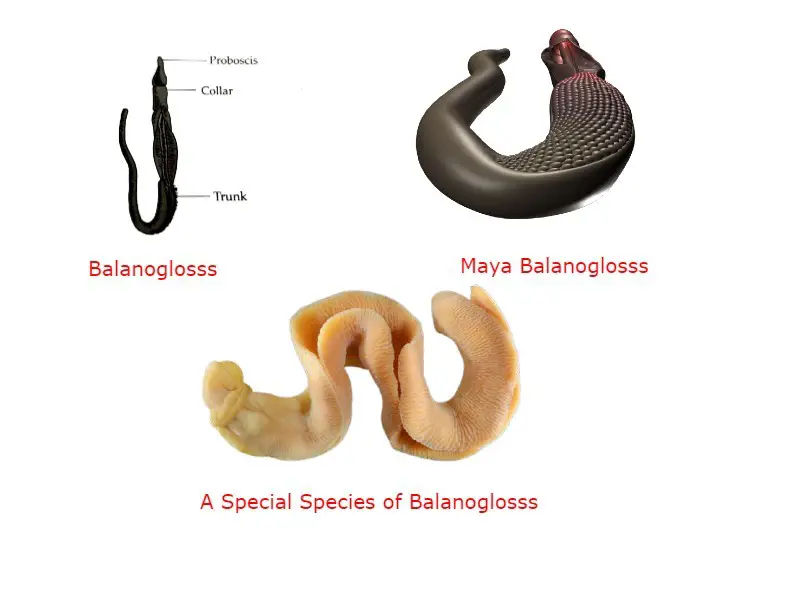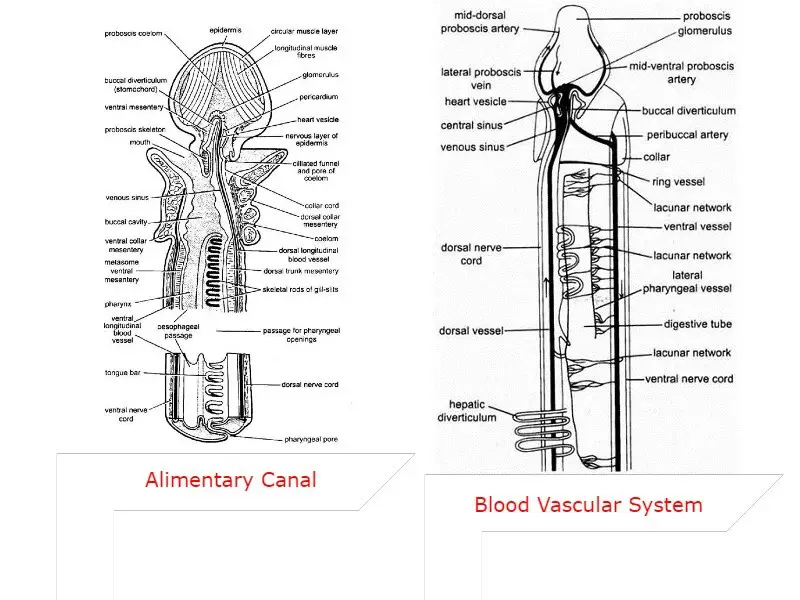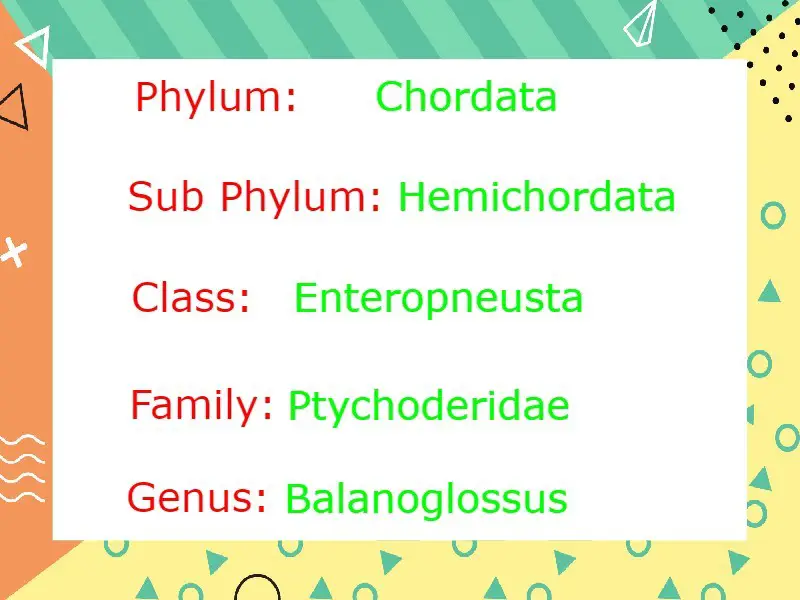We have discussed affinities between Balanoglossus with Chordata and now we will discuss affinities of Balanoglossus with other groups of animals, Rhynchocephalia, Phoronida, and Pogonophora.
Table of Contents
Affinities of Balanoglossus with Rhynchocephalia:
Some workers find great resemblance of Balanoglossus with Rhynchocephalia in various aspects-
- The elongated and vermiform body shape of Balanoglossus is also present in Rhynchocephalia.
- In Balanoglossus the metamerism is not present externally and in case of Rhynchocephalia the external metamerism is absent.
- Balanoglossus live in sand or mud in the burrows and this habits also present in Rhynchocephalia, the feeding mechanism of Balanoglossus is also similar in Rhynchocephalia.
- Body wall of Balanoglossus and Rhynchocephalia show much similarity, the nerve plexus under the epidermis is present in both. In epidermal tissue the single layer of glandular cells also similar in both.

Objections:
But there is also some dissimilarity between Rhynchocephalia and Balanoglossus, the arrangements of nervous tissue in both of them are different. The dorsal nerve cord is present in Balanoglossus but it is absent in Rhynchocephalia. The proboscis of Balanoglossus is protrudable but is not observed in Rhynchocephalia.
Affinities of Balanoglossus with Phoronida:
Some workers find a great resemblance between Balanoglossus and Phoronida in different ways and we will list them below-
- Nervous system in Balanoglossus is present in the body wall below the epidermis layers and in Phoronida the nervous system is also epidermal in nature.
- The so called notochord in Balanoglossus or buccal diverticulum like structure is also present in Phoronida, in Phoronida the paired gastric diverticulum show great resemblance with the buccal diverticulum of Balanoglossus.
- Phoronida and Balanoglossus have great power of regeneration, a single body parts can give rise to the whole body in those organisms.
- The actinotroch larva of Phoronida show very much similarity with the tornaria larva of Balanoglossus in many features. The presence of eyespot, proboscis pore, change in the position of coelom, sensory epical plate, ciliary ring around the anus all those features is common in actinotroch larva of Phoronida and tornaria larva of Balanoglossus.

Objections:
- The most important Chordata features, presence of gill slits is present in Balanoglossus but it is absent in Phoronida. The presence of pharyngeal gill slits in Balanoglossus make the Balanoglossus much closer to the Chordata as compared to Phoronida.
- The excretory organ in Balanoglossus and Phoronida show much dissimilarity, the paired metanephidia also make a major difference between the Balanoglossus and Phoronida.
Affinities of Balanoglossus with Pogonophora:
Due to some great resemblance between Balanoglossus and Pogonophora Marcus tried to establish a relationship between Balanoglossus and Pogonophora, we listed those similarities based on which Marcus assumed that there must be a close relationship between them.
- The coelom in Balanoglossus is formed from the archenteron in embryonic development. So the body cavity or coelom in Balanoglossus is enterocoelous type and in Pogonophora the coelom also enterocoelous type.
- Body cavity or coelom in Balanoglossus have three different regions which also observed in Pogonophora.
- The collar region in Balanoglossus is not communicate with trunk region, a collar-trunk septum separate the trunk region from collar region. This is also similar in Pogonophora, the mesosome part is separated from the metasome part of the body.
- In Balanoglossus the gonads present in the trunk region in genital wings, the position of gonad in Pogonophora is also in trunk part of the body.
- In Balanoglossus the nervous tissue present below the epidermal layers of the body wall and only comes out of the body wall in collar region, so nervous system in Balanoglossus is intra-epidermal. In Pogonophora the nervous system is intra-epidermal like Balanoglossus.

Objections:
- In Balanoglossus the digestive system is complete which starts at mouth opening and end at anus but in Pogonophora alimentary canal is absent.
- The distribution of nervous system in Balanoglossus show much concentration in collar region or mesosome but in Pogonophora the concentration of nervous tissue is high in protosome region of the body.
Reference:
Detailed Information on
What is Balanoglossus: A Tongue Worm
External Morphology of Balanoglossus
Coelom and Coelomic Fluid in Balanoglossus
Digestive System of Balanoglossus
Respiratory System of Balanoglossus
Blood Vascular System of Balanoglossus
Hi Everyone!!! Welcome to Imaluop. Imaluop always try to learn some new and he want to share to other people. Here we will try to learn various topics on Science, specially on Biological Sciences.
